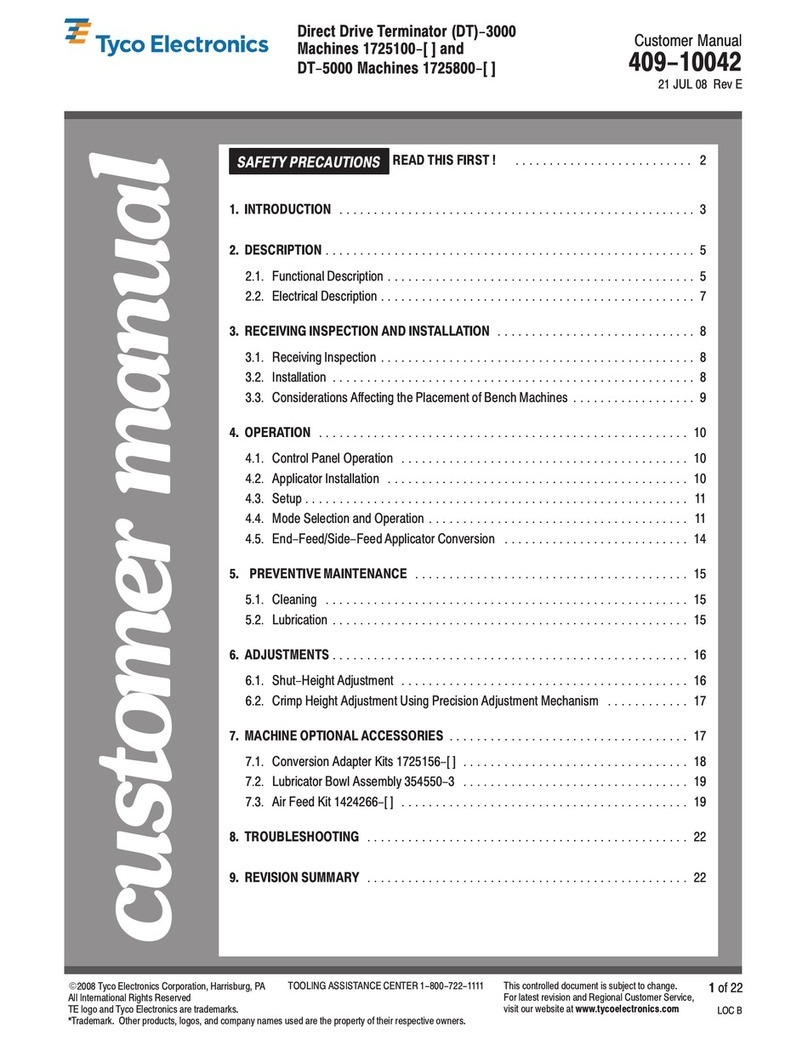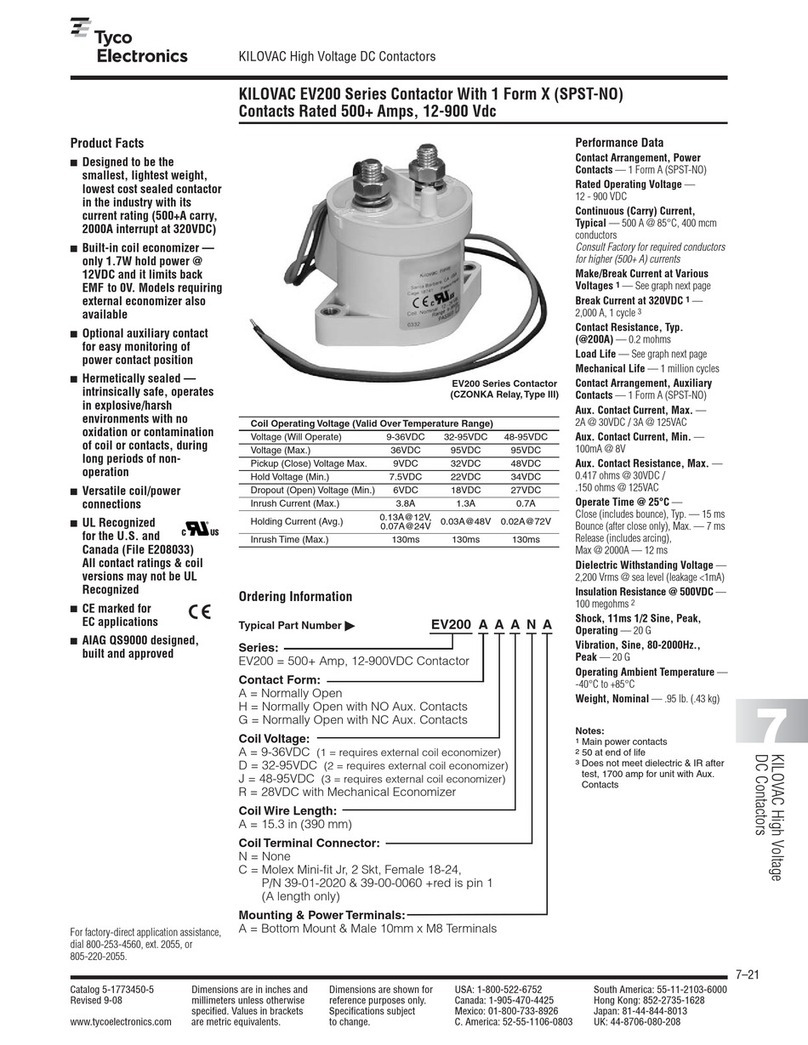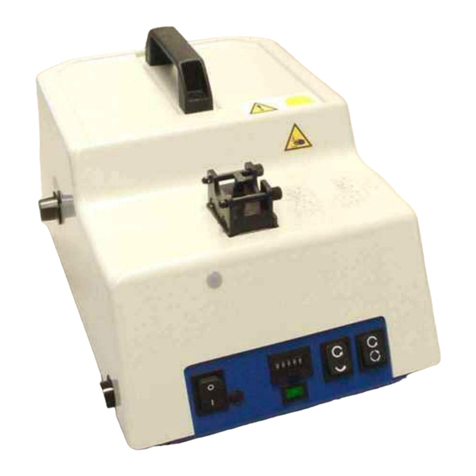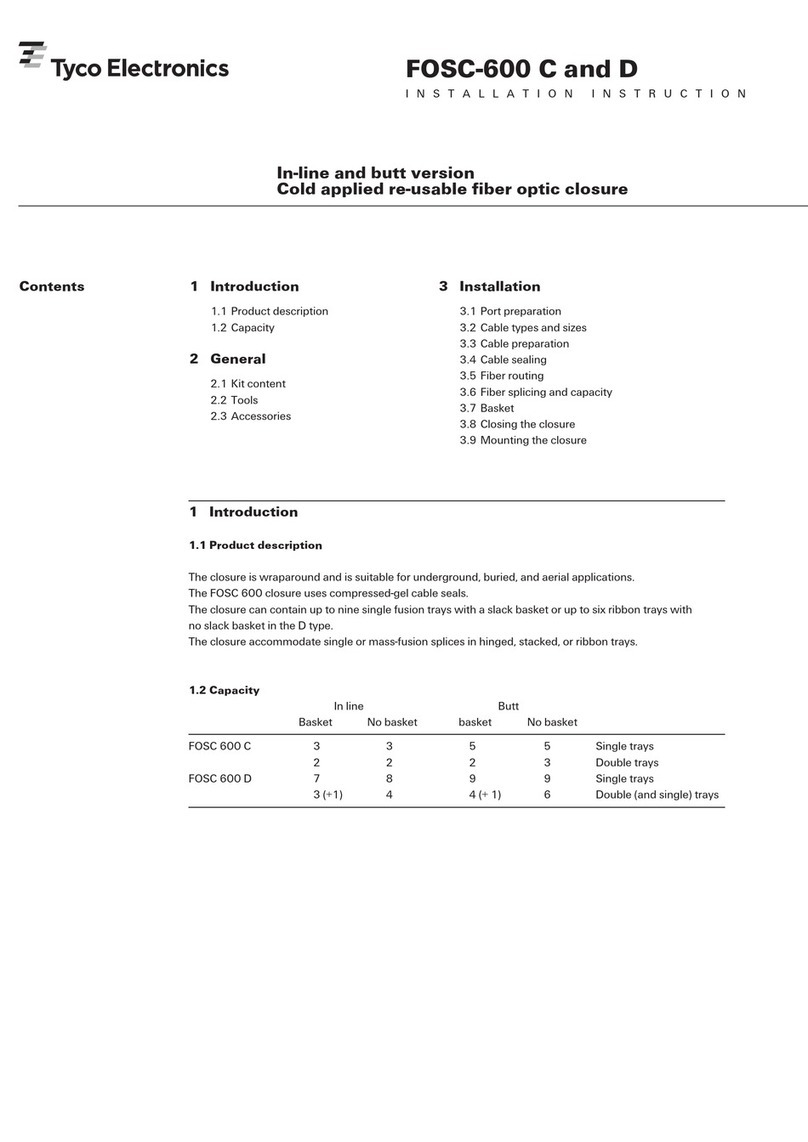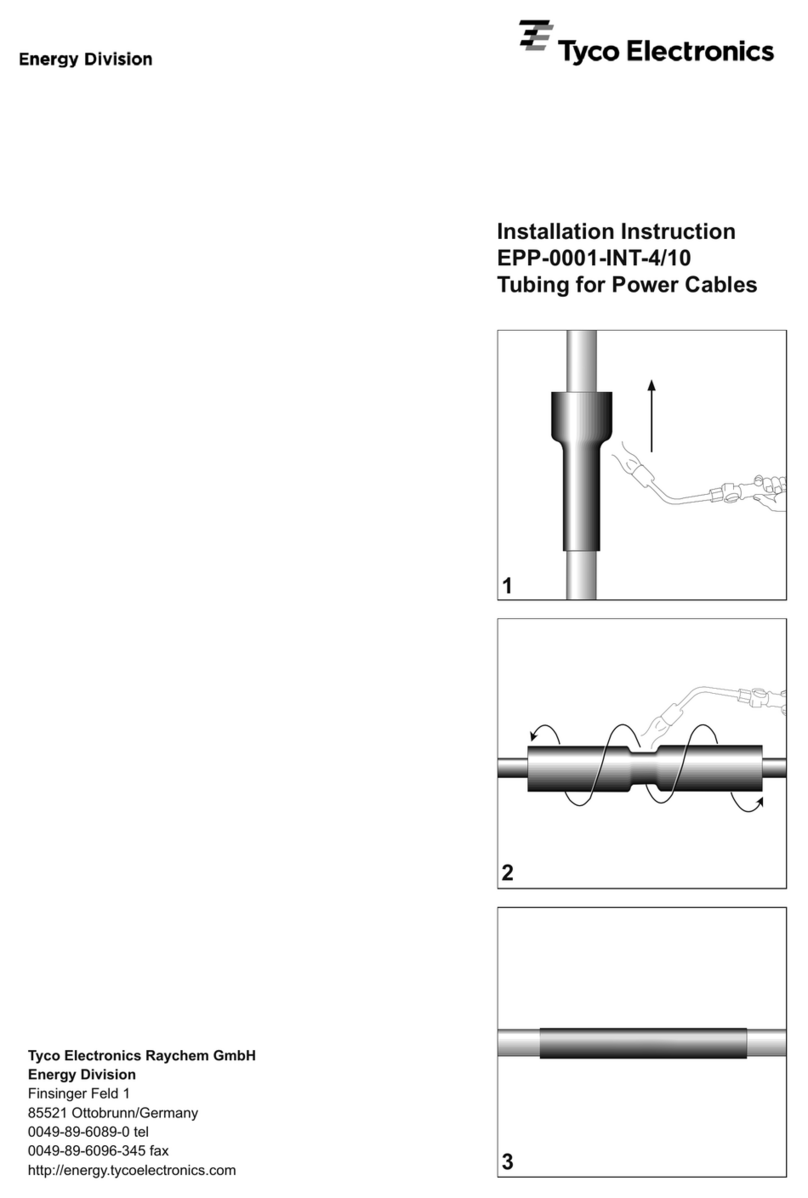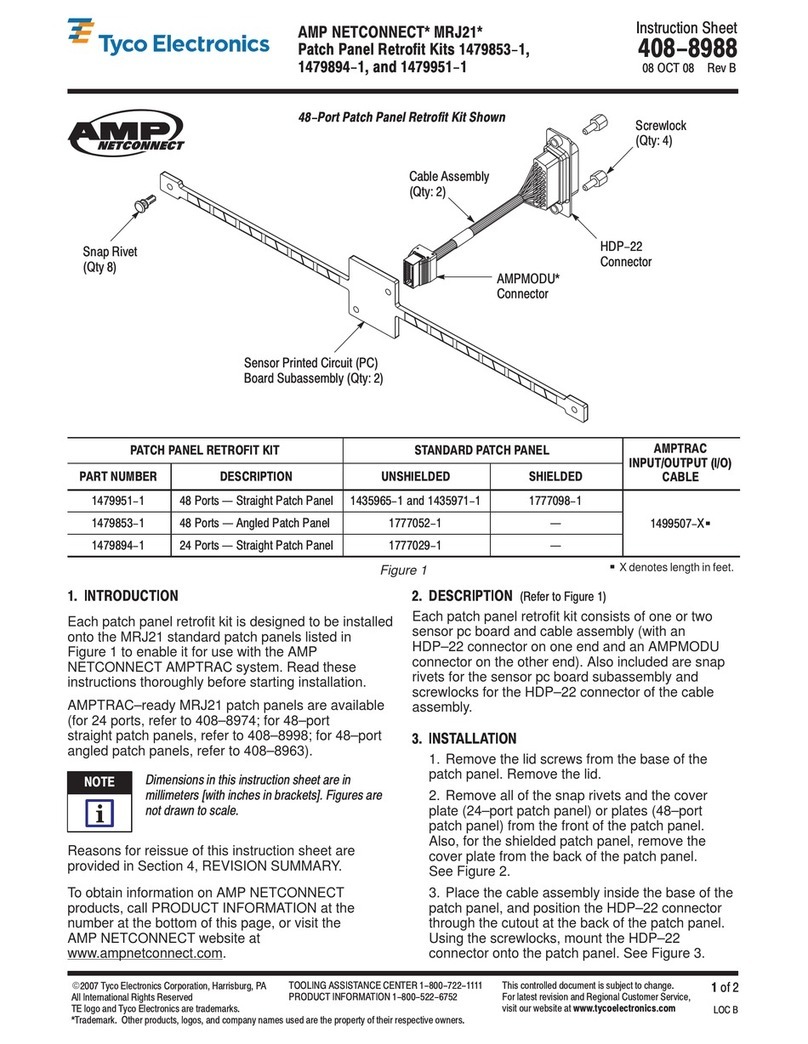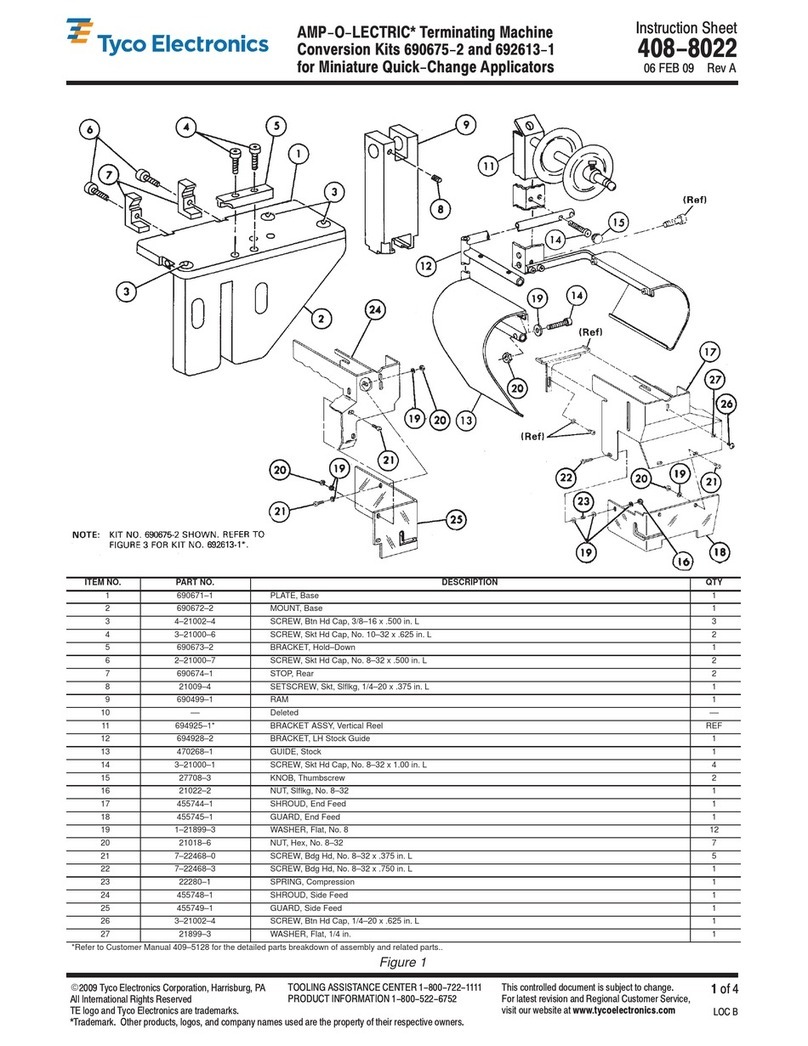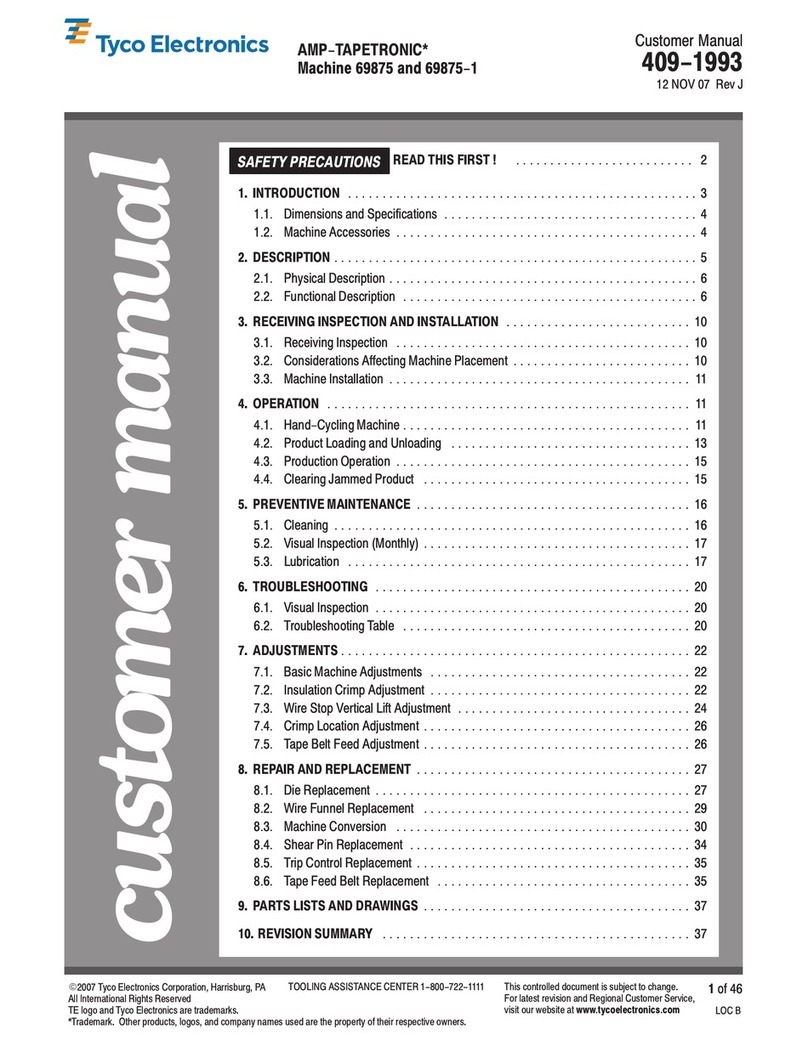
408–6929
MTA Terminating Head 58246–1
Rev C4 of 5
The locating pawl will move up and down as the
connectoris automatically advanced throughthe
head. However, if movement is obstructed, or if
desirable, the locating pawl can be depressed
and the connector moved manually out the
RIGHT side of the head.
7. Repeat Steps 2 through 6 until all contacts have
been terminated.
8. Inspect each termination according to the
procedure in Section 5, INSPECTION.
5. INSPECTION (Figure 3)
Inspect each termination to ensure the following:
1. Conductor is terminated past the lead–in
transition and about halfway in the contact slot.
2. Insulation is 1.02 [.040] minimum beyond the
front contact beam. See Figure 3.
3. Wire is NOT bottomed in contact slot.
4. Contact beams are NOT deformed. If damage is
apparent, replace contacts in accordance with the
instructions packaged with the connector.
5. Insulation of wire is NOT nicked or cut in any
area other than the two wire slots.
6. Wire extends below the strain–relief features of
connector.
6. TOOL MAINTENANCE
The procedures described in the following text have
been established to assure quality and reliability of
terminating tools. A brief check should be made daily,
and a more detailed inspection should be scheduled
by your quality control group.
6.1. Daily Maintenance
Each operator should be aware of, and responsible
for, the following:
1. Remove dust, moisture, and other contaminants
with a clean brush, or a soft, lint–free cloth. Do
NOT use objects that could damage the tool.
2. Make sure all components are in place and
properly secured. (If NOT, return the tool to your
supervisor.)
3. Actuate handle assembly to ensure
mechanisms inside head move smoothly.
6.2. Periodic Maintenance
Regular inspections should be performed by your
quality control personnel with a record of these
inspections remaining with the personnel responsible
for the tool. We recommend one inspection a month;
however, operator training and skill, amount of use,
ambient working conditions, and your company’s
established standards are all factors in establishing
frequency of inspections.
These inspections should be done in the following
sequence:
1. Remove any accumulated film with a suitable
cleaning agent that will NOT affect plastic material.
2. Make sure all components are in place and
properly secured. See Figure 6.
3. Make a few test terminations and inspect the
terminations in accordance with Section 5,
INSPECTION.
4. Check for chipped, cracked, worn, or broken
areas. If damage is evident, repair is necessary.
See Section 7, REPLACEMENT AND REPAIR.
7. REPLACEMENT AND REPAIR
The parts listed in Figure 6 are customer–
replaceable. A complete inventory can be stocked
and controlled to prevent lost time when replacement
of parts is necessary. Order replacement parts
through your TYCO ELECTRONICS Representative,
or call 1–800–526–5142, or send a facsimile of your
purchase order to 1–717–986–7605. or write to:
CUSTOMER SERVICE (38–35)
TYCO ELECTRONICS CORPORATION
P. O. BOX 3608
HARRISBURG, PA 17105–3608
8. REVISION SUMMARY
Since the previous release of this sheet, the following
changes were made:
Per EC 0990–0826–03:
S
Updated document to corporate requirements
S
Removed item 6 from Figure 6
NOTE
